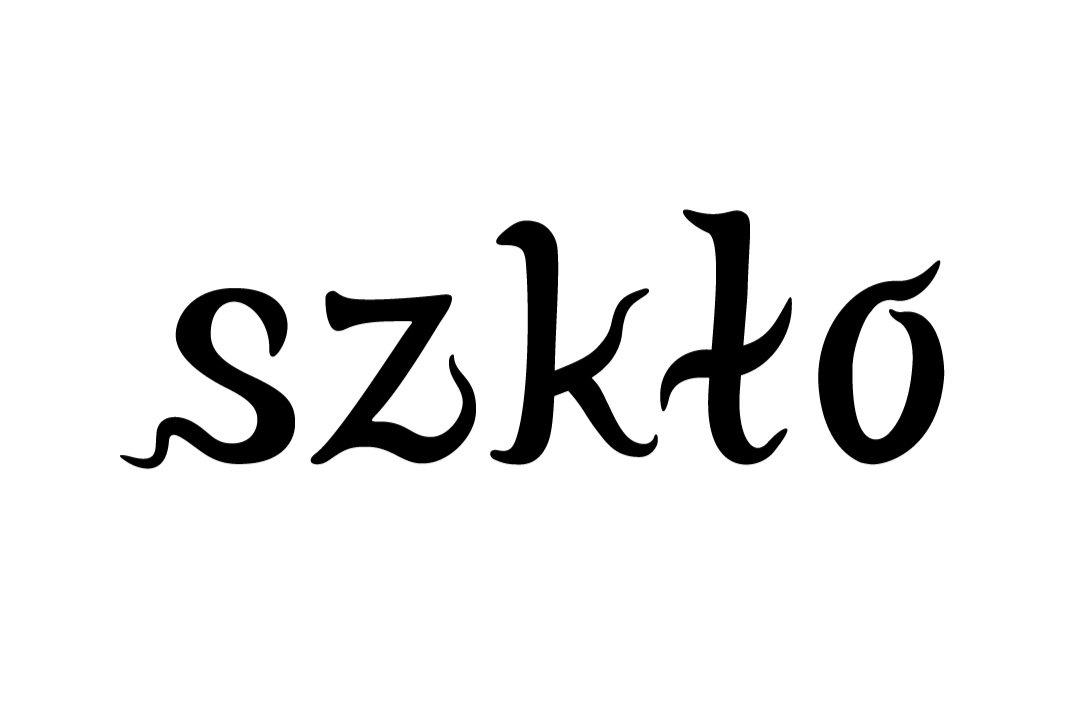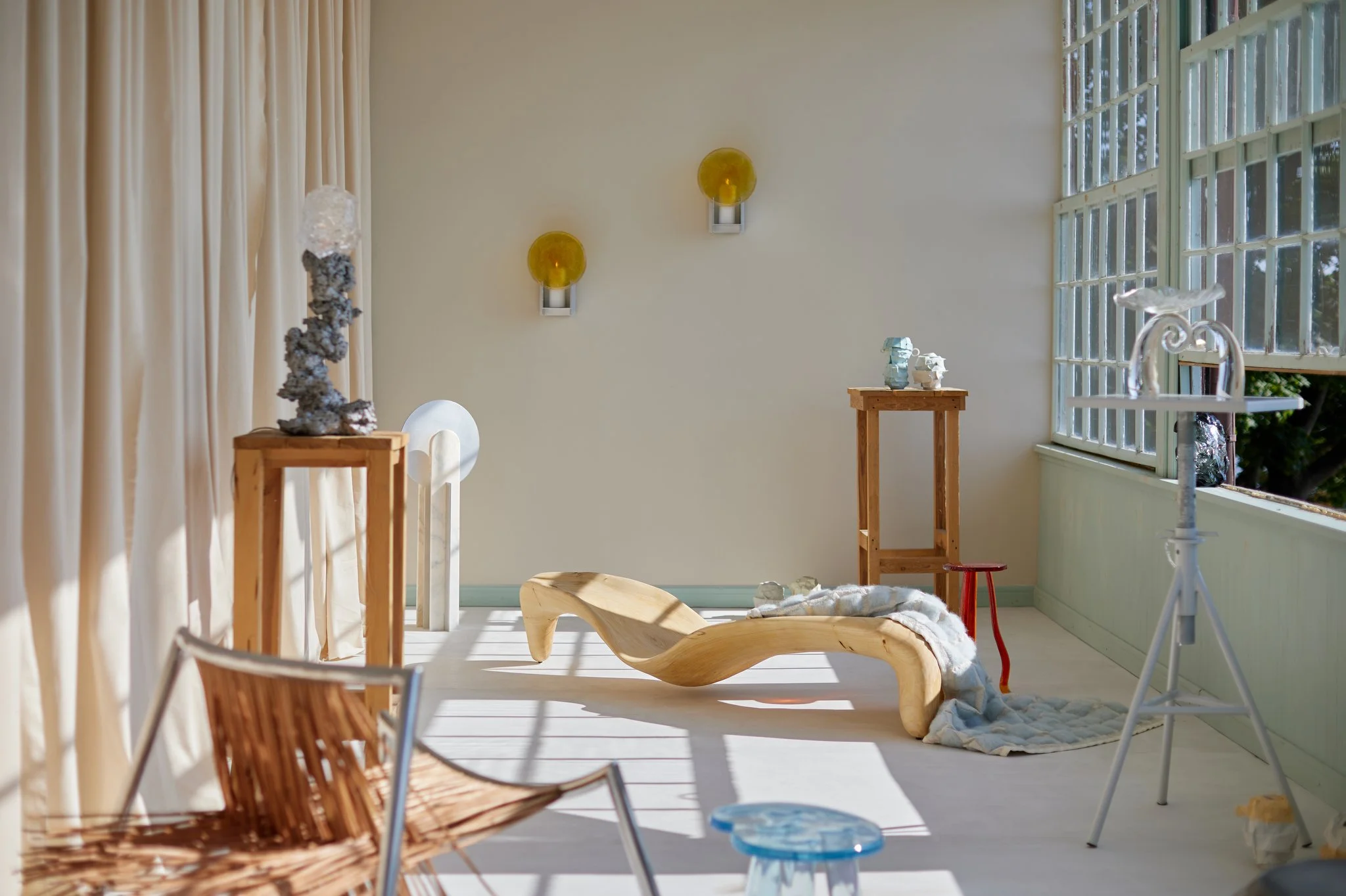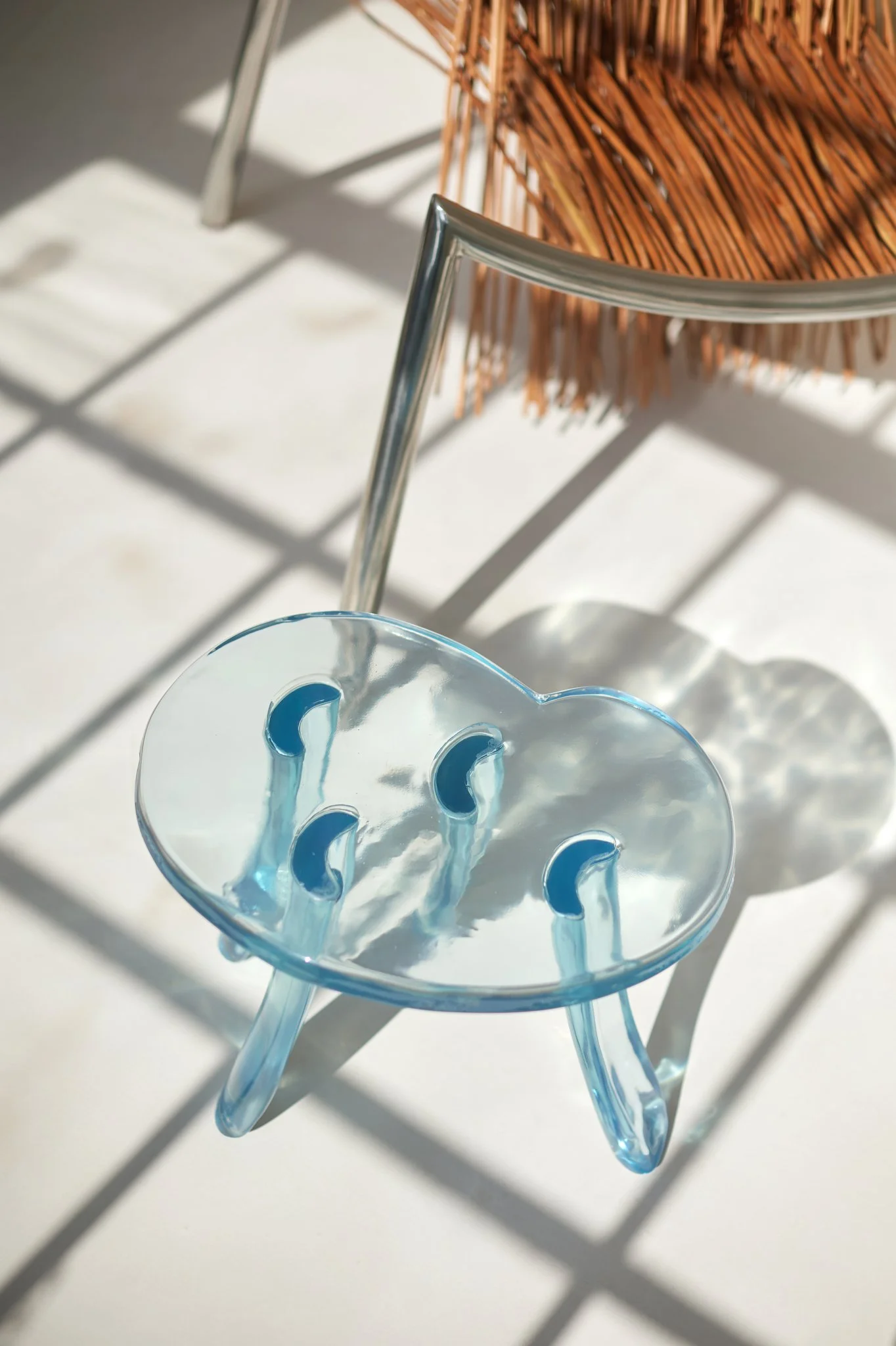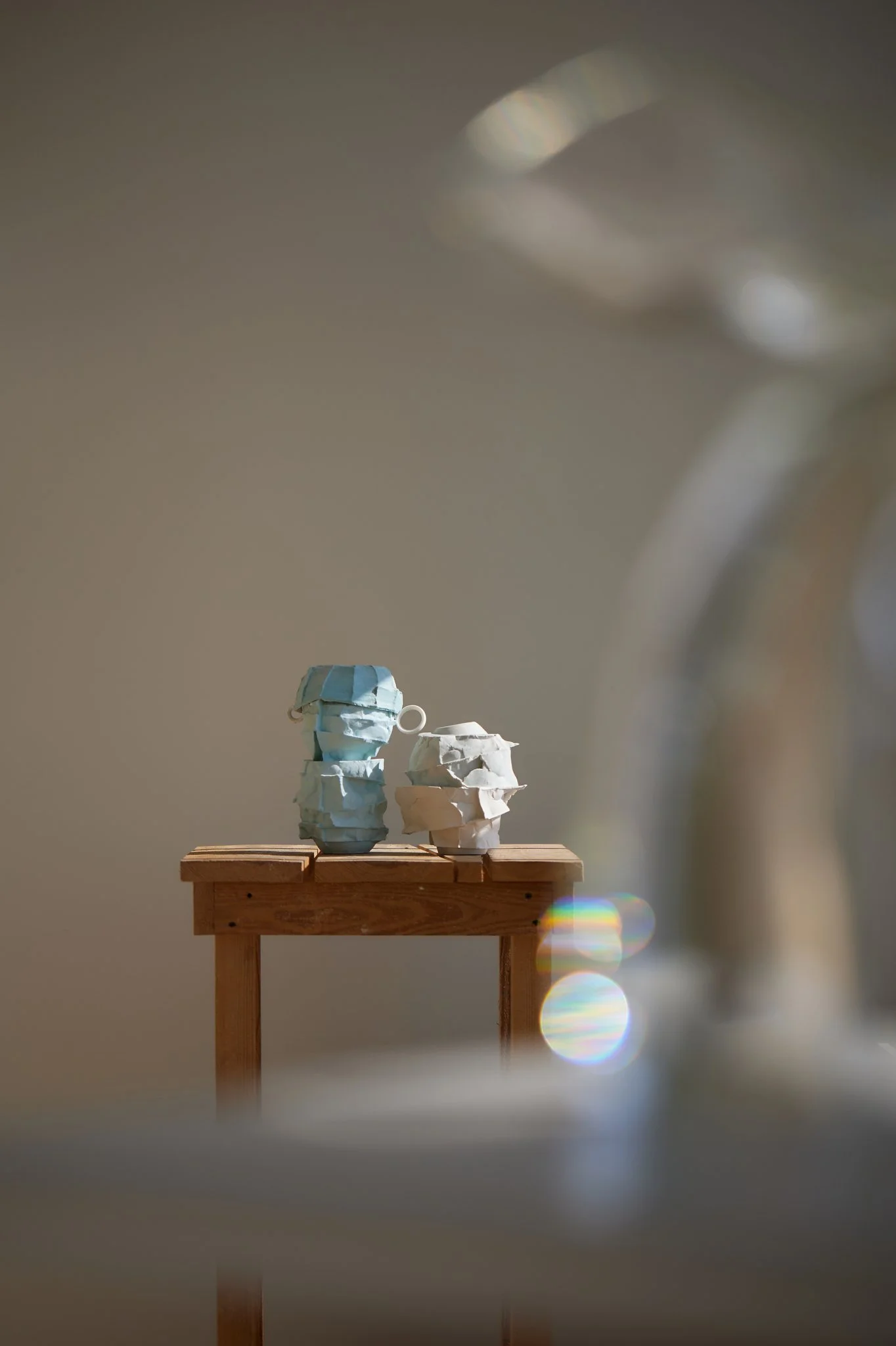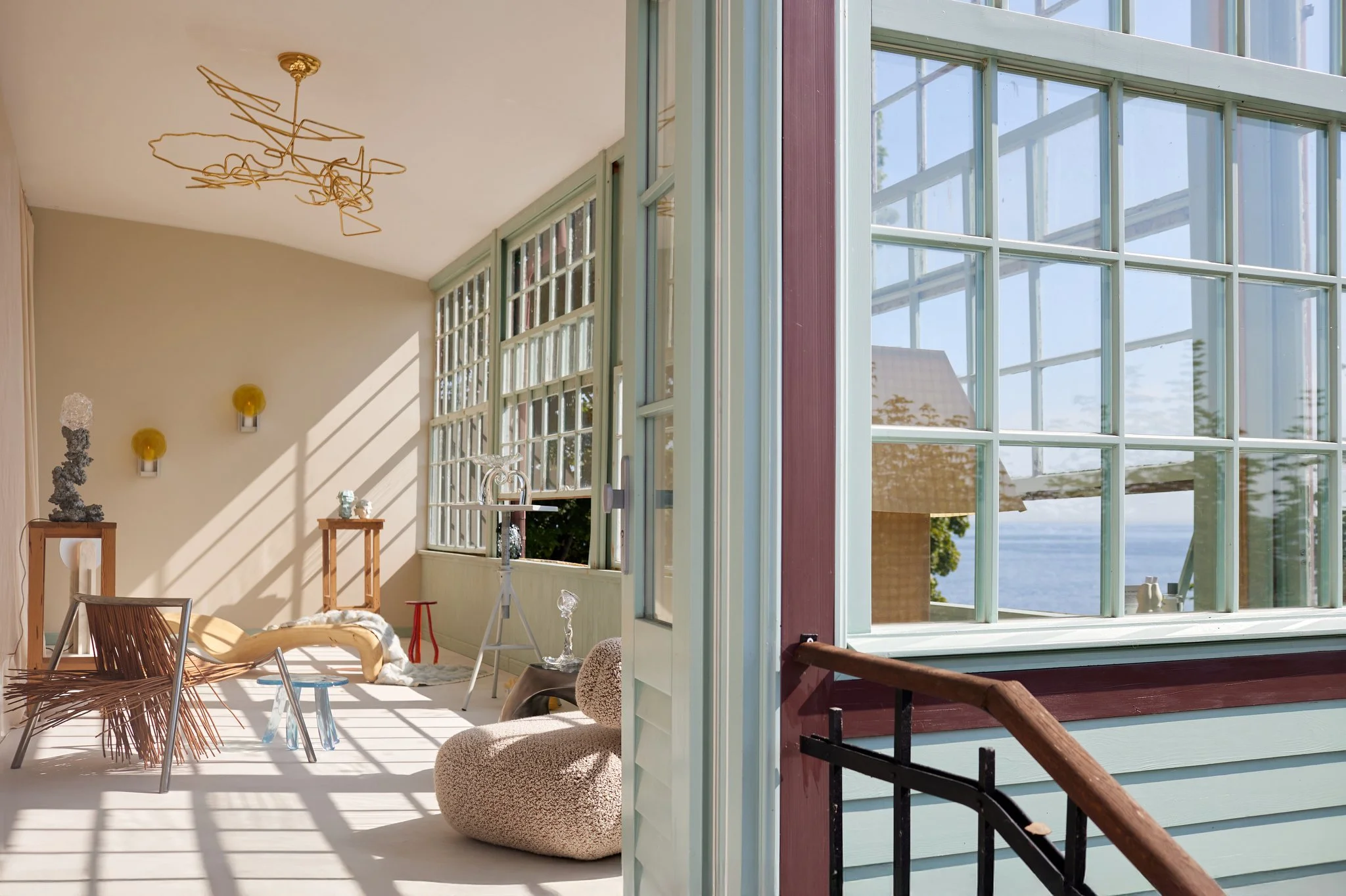Dom Kuracyjny - Objekt Summer Gallery
9-24th August 2025
Orłowska 2, Gdynia
Objekt Summer Gallery - series of summer exhibitions outside of Warsaw - presented works that constitute the small-scale architecture of a contemporary resort house.
“These works are connected to the concept of rest and rituals of regeneration and purification, and the celebration of boredom. Streamlined in shape, they emerge from the seascape, reinterpreting its attributes. Created through a contemplative process of weaving, forming, and gluing, in the context of a place with such a strong heritage, they emerge as a medium of slowing down, of re-embedding in the body and space.” - Aleksandra Krasny
“In the 19th century, Vincent Priessnitz – a self-taught Austrian peasant – began popularising hydrotherapy. He treated patients with baths, compresses, cold showers, and drinking water at the first sanatorium, founded in Gräfenberg in the Czech Republic. This sanatorium spa initiated a proliferation of similar facilities. Baden-Baden, Vichy, Karlovy Vary, and Kudowa-Zdrój became some of the most fashionable European resorts, centers of cultural and political life.
The Orłowski Kurhaus was the first seaside resort house in the Gdynia region. Designed in the style of Baltic guesthouses, it drew on the aesthetics of German resort architecture popular along the Baltic coast, such as Zoppot (present-day Sopot). Opened in the summer of 1907, the wooden building designed by the Grablowski brothers featured distinctive half-timbered verandas, a vast terrace that could accommodate 500 guests, a glass-enclosed gallery, and above all, a stunning view and proximity to the sea. Treatment here – in keeping with the fashion of the time – consisted primarily of bathing (sea, sun, and brine), as well as walks along the beach and cliff. After the war, it lost its original function in favor of municipal housing and fell into partial decline, but nestled within Kępa Redłowska and set against the backdrop of the Orłowski Cliff, it remains one of the city's most distinctive architectural features.” - Aleksandra Krasny
Press:
Curation: Aleksandra Krasny
Artists: Jan Ankiersztajn, Olaf Brzeski, Paweł Grunert, Hasik Design, Szymon Keller, Studio Kuhlmann, Monika Patuszyńska, Basia Pruszyńska, Rest Studio, Marek Ruszkiewicz, Filomena Smoła, Aleksandra Zawistowska
Partners: Galilu, Perrier, NAP
Photography: Daria Szczygieł
